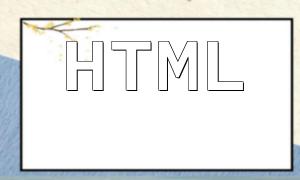With the rapid growth of the internet, web forms have become an essential feature in modern web development. Web forms allow users to input data on a webpage and send it to the server for processing. PHP, as a widely-used server-side scripting language, provides strong support for developing web forms. This article will explain how to develop web form functionality with PHP and offer practical code examples to help you get started quickly.
First, we need to create a form in the HTML page. Forms are enclosed within a tag and use various input elements (such as text boxes, checkboxes, and drop-down lists) to collect user input. Here's an example of a basic HTML form:
<form action="process.php" method="post">
<label for="name">Name:</label>
<input type="text" id="name" name="name">
<label for="email">Email:</label>
<input type="email" id="email" name="email">
<input type="submit" value="Submit">
</form>
In the code above, the tag is used to create the form, and the action attribute specifies the URL where the form data will be submitted (i.e., process.php). Each input element includes a name attribute to identify the data when processing the form.
When the user submits the form, we need a PHP script to process the submitted data. PHP provides the $_POST superglobal variable, which we use to retrieve the data. Here's an example of a PHP script that handles the form data:
<?php
// Get form data
$name = $_POST['name'];
$email = $_POST['email'];
// Display form data
echo "Your name is: " . $name . "<br>";
echo "Your email is: " . $email;
?>
In this example, we use the $_POST array to access the form data. The keys of the $_POST array correspond to the name attribute of the input elements. After retrieving the data, we simply use the echo statement to display it on the page. Of course, in a real-world application, you might store the data in a database or perform other operations.
Form validation is an essential step in web development. We need to ensure that the data entered by the user is valid, such as checking if fields are empty or if the email format is correct. Here's an example of basic PHP form validation:
<?php
// Get form data
$name = $_POST['name'];
$email = $_POST['email'];
// Form validation
if (empty($name) || empty($email)) {
echo "Name and email cannot be empty";
} elseif (!filter_var($email, FILTER_VALIDATE_EMAIL)) {
echo "Invalid email address";
} else {
// Display form data
echo "Your name is: " . $name . "<br>";
echo "Your email is: " . $email;
}
?>
In this example, we first use the empty() function to check if the name and email fields are empty. Then, we use the filter_var() function to validate the email format. Based on the validation result, the script will output different messages.
By using PHP to develop web forms, we can easily create interactive and user-friendly forms to collect and process user data. This article has provided simple code examples to demonstrate how to create HTML forms, handle form data, and validate the form. In a real-world application, you can extend the functionality by adding more complex validation logic and data processing operations.
I hope this article helps you better understand and implement PHP web form functionality. If you have any questions, you can refer to more PHP development resources.









